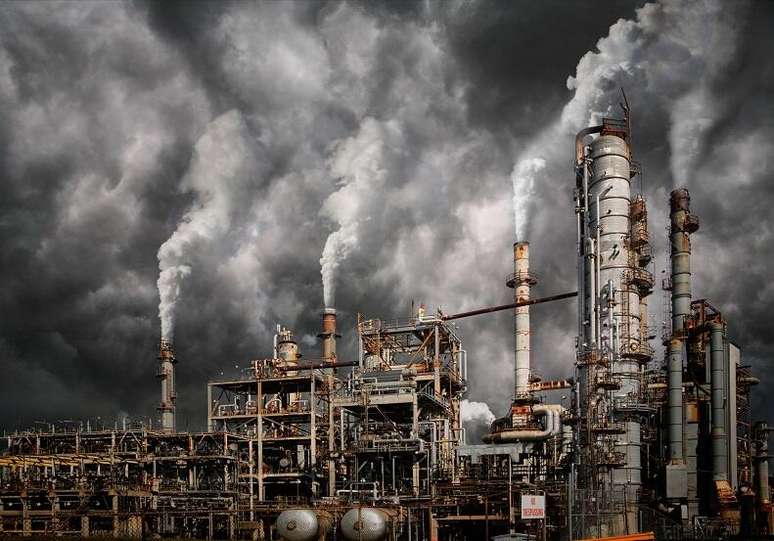Attribution studies attempt to link human-caused changes to the latest catastrophic events on the planet.
From coast-to-coast forest fires in Canada, to major cyclones and floods in southern Brazil and the catastrophic flooding in Libya, to heat waves in the Northern Hemisphere, severe weather events have dominated headlines in recent months.
As the planet warms due to ever-increasing greenhouse gas emissions, climate change has largely taken the blame for an apparent increase in weather disasters.
Are recent catastrophes really the fault of global warming?
“The summer heat isn’t just barking: it’s already biting. Climate collapse has already begun”said António Guterres, United Nations Secretary-General, reacting to the news that June to August 2023 were the warmest months on record in the Northern Hemisphere.
But to what extent can a heat wave or severe storm be attributed to global warming, and how much is just due to natural climate variability?
A climate attribution, a relatively new science, seeks to answer this question. Its goal is to assess the extent to which human-caused climate change, driven primarily by the use of fossil fuels, increases the likelihood and intensity of an extreme weather event.
“No hurricane is 100% caused by climate change, but it is affected by climate change in many different ways,” explains Delta Merner, chief scientist at the Union of Concerned Scientists’ Center for Climate Litigation.
“Attribution science can help us really understand the role of climate change in these different events.”
Climate change and fires in Canada
By the time they spread from the East Coast to the West Coast in mid-2023, Canada’s wildfires had burned nearly twice as much area as the previous record.
In response, researchers at the UK-based World Weather Attribution (WWA) initiative undertook a typically rapid study to determine the extent to which human-caused climate change has increased the likelihood of an unprecedented wildfire.
Focused on the province of Quebec, the investigation concluded that the changes contributed to a dry climate that was between 20% and 50% more “fire-prone” than average, more than doubling the likelihood of extreme fires in the Eastern Canada.
The warmer and drier climate meant, for example, that the snow melted faster, bringing the start of the fire season earlier and increasing its duration.
WWA says advances in climate modeling and better access to weather data have increased the reliability and accuracy of studies evaluate the probability of extreme weather events with or without climate change.
The changes did not affect the Italian floods
A The climate crisis cannot always be directly attributed to extreme weather phenomena. In May 2023, in the Emilia-Romagna region of northern Italy, three storms caused widespread landslides and floods considered the worst in a century.
But although the rising waters are in line with the highest incidence of climate-driven extreme weather worldwide, researchers concluded that it was an isolated event.
After analyzing rainfall data in Emilia-Romagna dating back to 1960, scientists, including Friederike Otto, a climatologist at Imperial College London and co-founder of the WWA, concluded that spring rainfall in the region they are becoming neither more nor less intense due to climate change.
In other words: this specific 21-day period of rain – unique in a 200-year period and with only a 0.5% chance of occurring each year – could have occurred with or without climate change.
To the floods they were caused by unique and unusual weather conditions, “driven by an unprecedented sequence of three low-pressure systems in the central Mediterranean,” explained study author Davide Faranda, a researcher at the Pierre-Simon Laplace Institute.
Floods in Libya and Greece
After Storm Daniel triggered floods that caused two dams to collapse and killed thousands in Libya in early September, a WWA study found that Human-caused planetary warming has increased the likelihood of torrential rain by up to 50 times. Massive flooding in central Greece caused by the same storm was up to 10 times more likely.
After a summer of heat waves and record fires With “a very clear footprint of climate change, quantifying the contribution of global warming to these floods has proven more challenging,” Otto points out.
To find out whether rising temperatures had caused heavier rainfall in the region, scientists compared weather data from the climate before 1880 with the current climate, which is 1.2°C warmer.
The report records what the analysis includes “large mathematical uncertainties”as the weather models covered relatively small areas and “most climate models do not represent precipitation well at these small scales”.
However, “studies predict heavier rainfall in the region as temperatures rise,” and data from the local weather station in Greece, for example, show a trend towards heavier precipitation. A warmer atmosphere holds more moisture, so with just 1.2°C of warming “we would expect a 10% increase” in precipitation intensity, Otto explains.
Record heat waves in 2023
A connection between extreme temperatures and global warming It is usually much clearer than in rainy weather. WWA released a study showing that extreme heat in July 2023 in regions of the United States, Mexico and southern Europe “would have been virtually impossible to occur if humans had not warmed the planet by burning fossil fuels.”
In the month in question, more than 6.5 billion individuals – or approximately 80% of the world’s population – has been exposed to one or more hot days with at least three times greater probability that could occur due to climate change, according to attribution analysis by Climate Central, a U.S.-based climate think tank.
The analysis assessed 4,700 cities in 200 countries, finding that residents of 15 large cities with populations of more than 6 million were exposed to high average monthly temperatures made more likely by global warming. These include Mexico City, Cairo, Calcutta, Lagos, Hong Kong, Miami and Khartoum.
“Human-caused climate change has affected July temperatures for the vast majority of humanity,” said Andrew Pershing, vice president of science at Climate Central. “Across the planet, the The average human was exposed to 11 days where carbon pollution made local temperature increases at least three times more likely. Virtually no place on Earth has escaped the influence of climate change.”
This content is a work originally published by the German agency DW. The opinion expressed by the publication does not reflect or represent the opinion of this portal or its collaborators.
Source: Terra
Rose James is a Gossipify movie and series reviewer known for her in-depth analysis and unique perspective on the latest releases. With a background in film studies, she provides engaging and informative reviews, and keeps readers up to date with industry trends and emerging talents.







